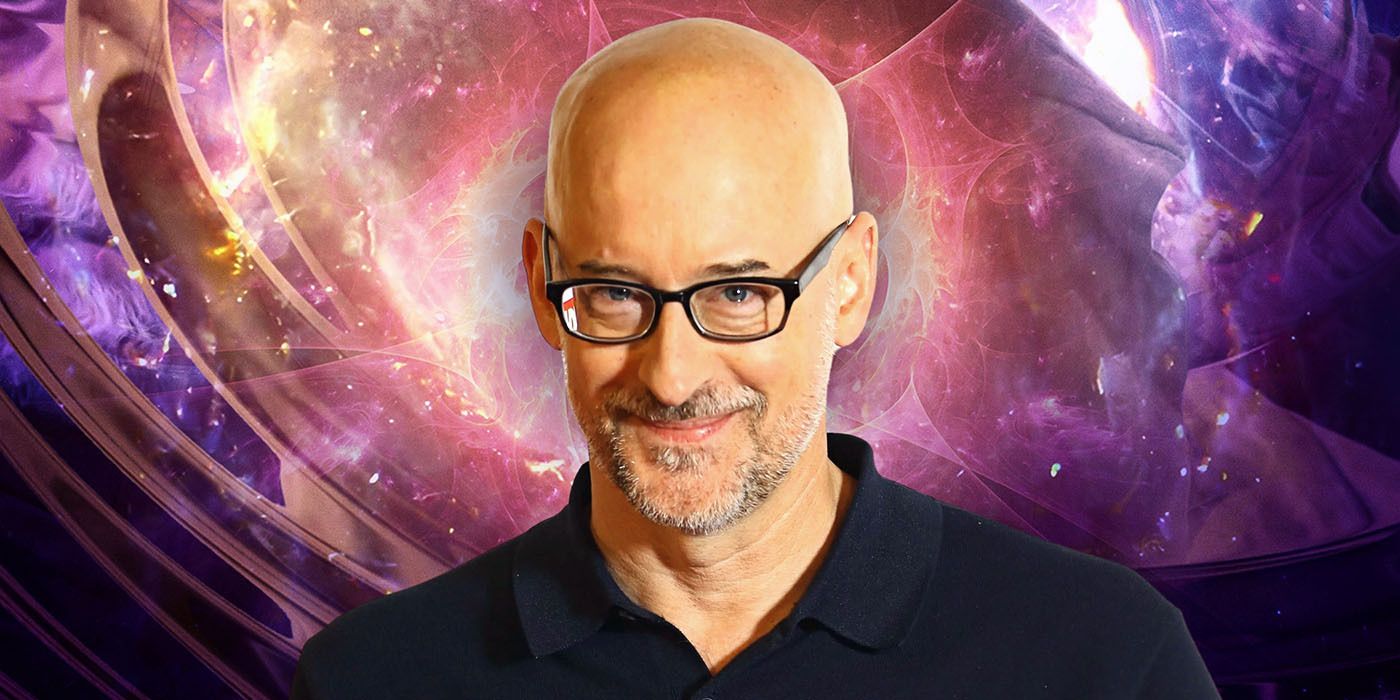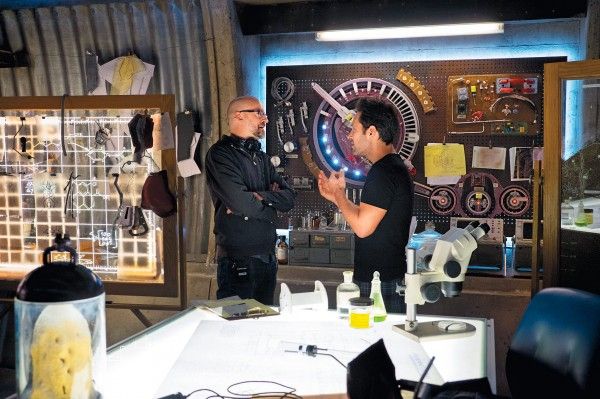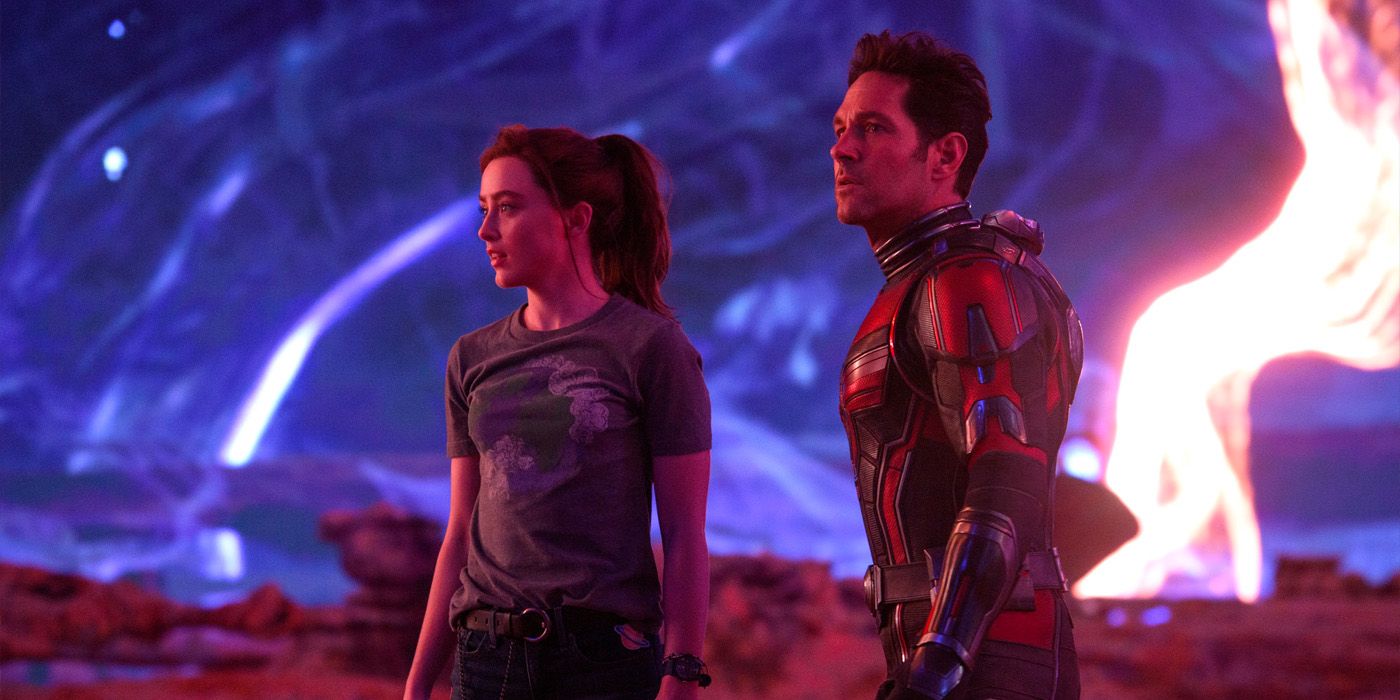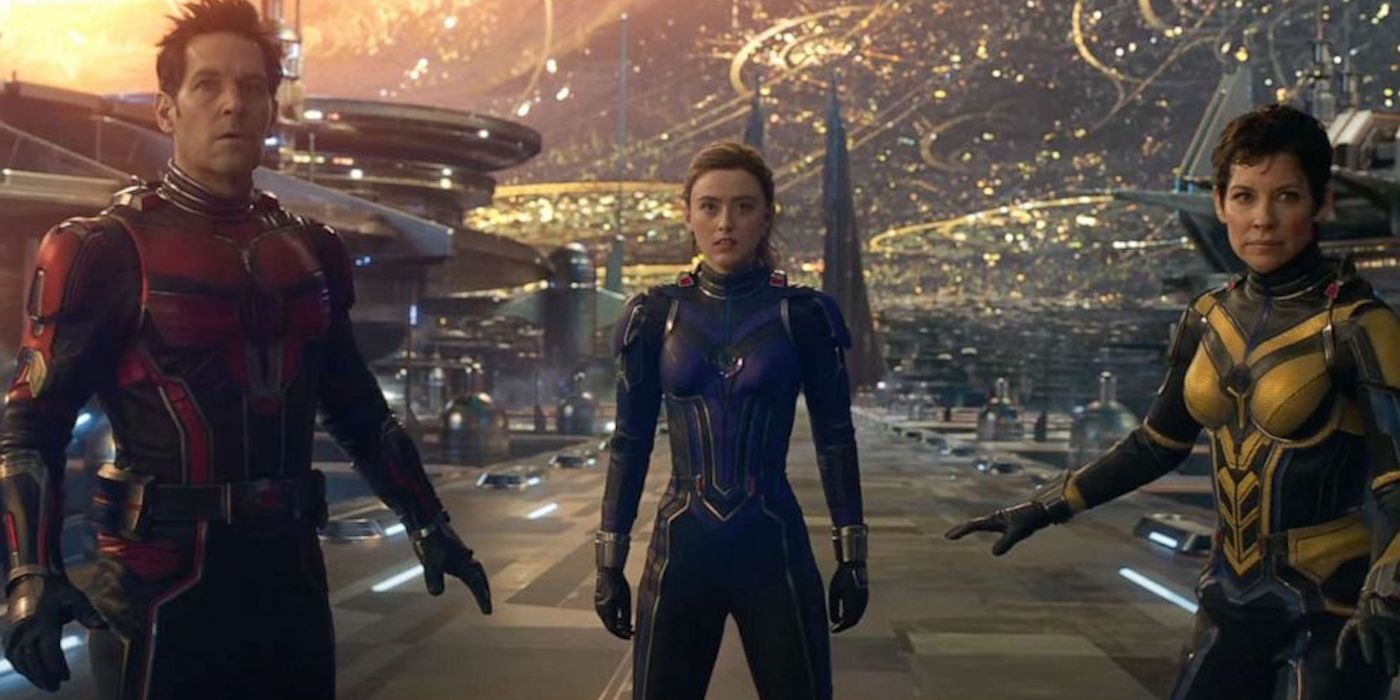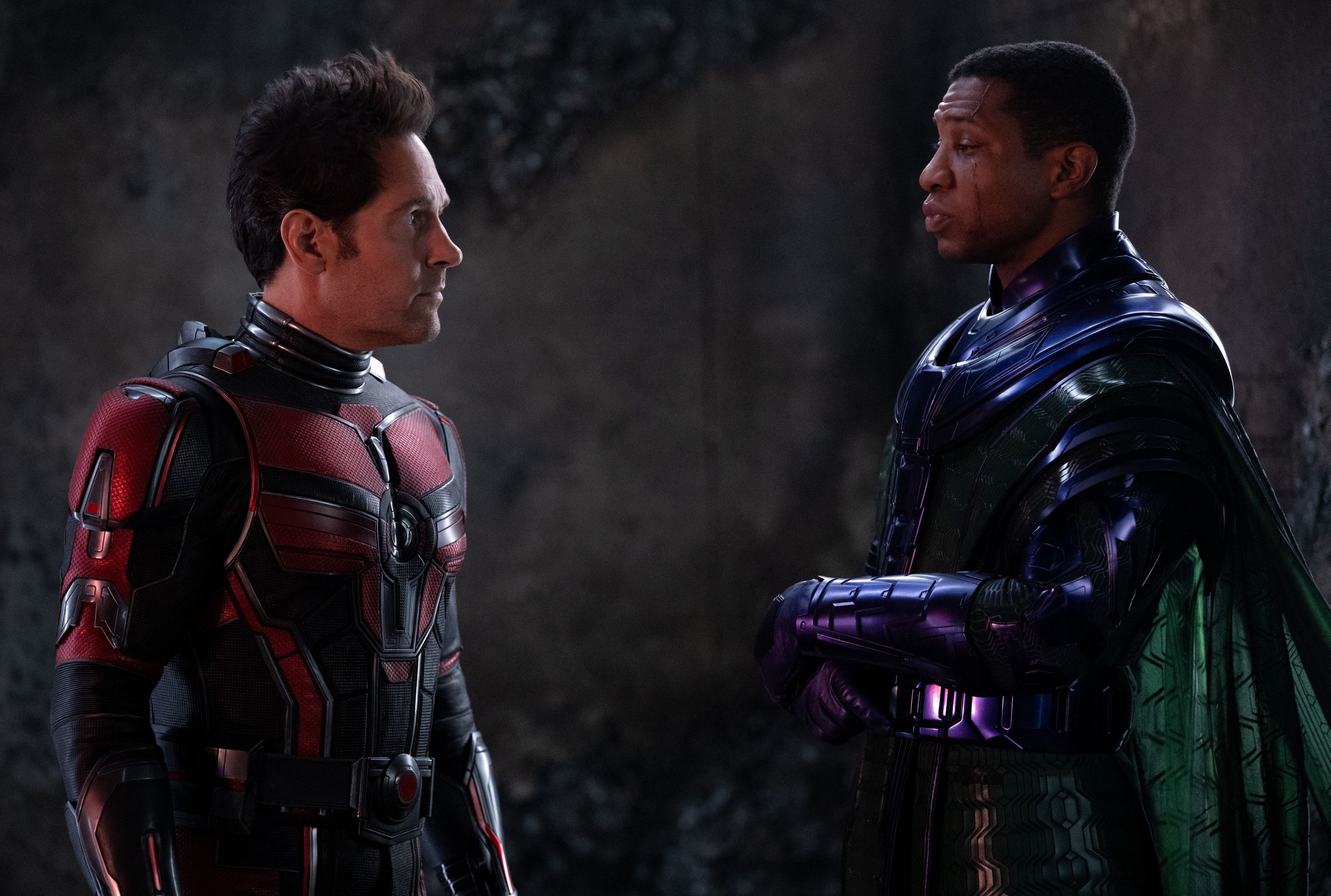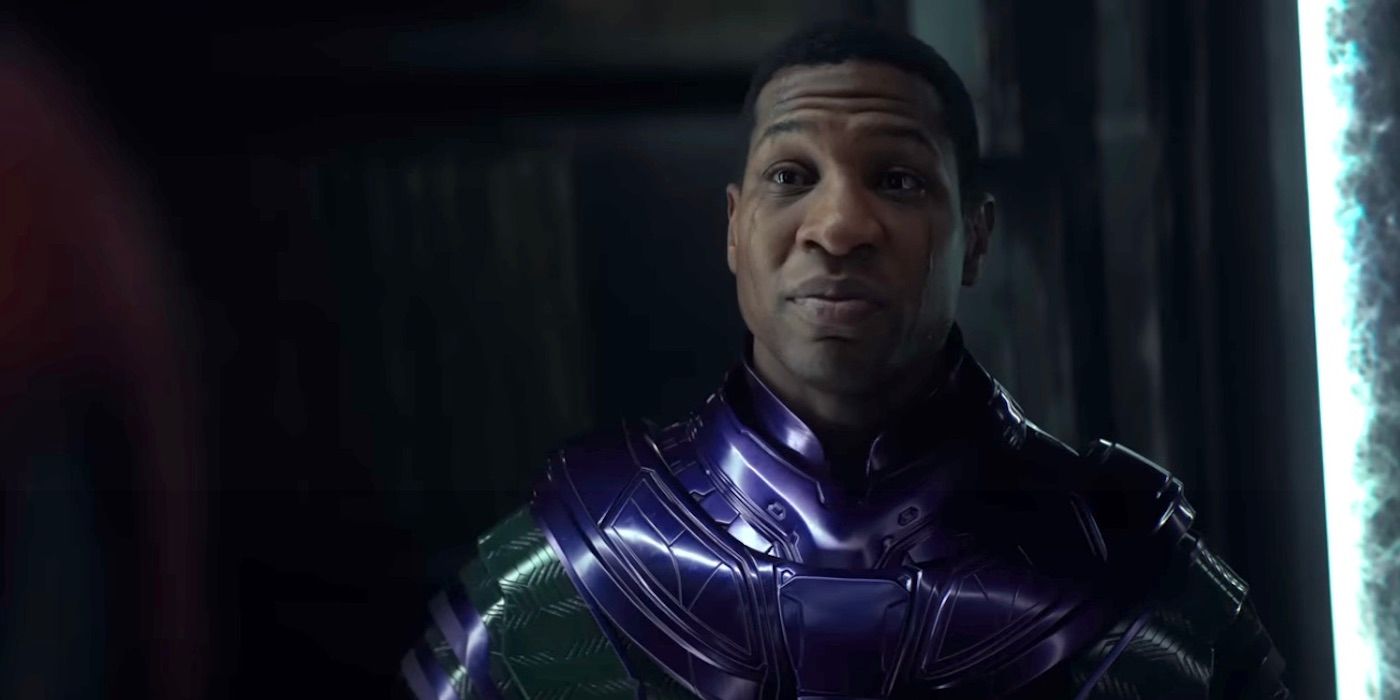Before MCU’s Phase 5 kick-off with Ant-Man and the Wasp: Quantumania was released in theaters, Collider’s Steve Weintraub spoke with director Peyton Reed about all things Marvel. Reed is the filmmaker behind all of the Ant-Man movies, bringing with him not only a love for the little guy, but for Marvel comics, as well.
In Quantumania, Scott Lang, played by Paul Rudd, is about to embark on an unexpected journey with reality-altering consequences. But first, Lang is living large off the 15-minute fame he garnered from his association with the Avengers. This Pym-flated ego causes tension in the family, and conflict with his daughter, Cassie (Kathryn Newton), a relationship already strained by Scott’s 5-year disappearance from her life. The duo’s relationship, as well as the bond between Hope Van Dyne (Evangeline Lilly) and her parents, Janet Van Dyne (Michelle Pfeiffer) and Hank Pym (Michael Douglas), will be tested in more ways than they expect. When the whole family is sucked into the Quantum Realm, they find themselves literally in a race against time to attempt to stop Kang the Conqueror, played by Jonathan Majors, from wiping out entire timelines.
During their interview, Reed discussed using the same volume technology he worked with while directing The Mandalorian for the Quantum Realm, the VFX and artists, and whether he’ll be helming another Marvel project in the future. Reed also talks about introducing new comic characters in Quantumania, working with Majors to pin down Kang’s demeanor and mentality, why Ant-Man appeals to him, and deleted scenes. For all of this and more, check out the interview in the player above, or read the full transcript below.
COLLIDER: When you were offered The Mandalorian, did you have any say on the episodes that you got to direct, or was it like, “Would you like to direct The Mandalorian, and here's what you will do if you say yes?”
PEYTON REED: I had gone down to visit [Jon] Favreau on the set of Season 1 Mandalorian because everyone was talking about the volume technology. I love Star Wars and I love Favreau, so when Season 2 came about Jon called and said, “Would you like to come down and do an episode?” I was like, “Yeah, absolutely.” It was the second episode of Season 2 that I originally signed on for, and Jon had written a rough script, and then I fleshed the script out, and we worked on it together.
Then that was the first one we shot for Season 2. It wasn't the first episode aired, but it was the second episode. It was the first one we shot and they were psyched about it, and they had this finale coming up, which all he said was, “There's going to be sort of a big swing in the finale.” I was like, “What you got going on?” And he said it's going to be a very emotional episode and then he talked me through what it was about, and I read the script, and I was like, “Absolutely, I'm doing this.” We already started working on the script and formulating Quantumania, but it was still early on and we had time, and I was like, “I cannot pass up this chance.”
You got to work with the volume technology. When you were on set directing The Mandalorian were you like, “Oh, I'm using this on Quantumania.”?
REED: Well, it was the technology I wanted to know about, right? I wanted to see how it worked and how it could be applied. So I didn't necessarily specifically think, but it was definitely in the back of my mind, “We're going to do Quantumania and we have to render the Quantum Realm vividly.” There were things that I wanted to do, but I wasn't sure that the volume technology was ready for it.
What was great about The Mandalorian is, shooting these great location backdrops and then putting them up there, and it feels very photo-real, but we were [going to] be creating digital backdrops – some based on real photography – but it was a different thing altogether. We also wanted a lot of movement within those screens. We ended up using the volume technology, [and] it was great for certain environments, but not necessarily right for other ones. There's also just size and shape. Sometimes our sets are too big for the volume, so we would use partial sets.
So it was definitely one of the tools we used in our toolkit, and the actors love it because they get to see a version of what they're [going to] see in the movie. The interactive lighting is obviously great, but it's great, the actors love it. It's not always the right tool, but I liked it because we wanted to create all these different parts of the Quantum Realm that had to look and feel differently. So it was cool to have some that were and some that weren't.
Do you envision using the volume technology and in most of your future things? Is it something that's – I hate the term game-changer, but is it a game-changer for your future?
REED: I think, again, it's like the idea of LED technology and using that as interactive light and visual effects is good. You know, there are limitations to it, and we push that system to its limit on this movie. There are things that it could do and it can't do. What works so well in Mandalorian is they have a lot of lead time, because they're doing a whole series, to invest and create these environments, and on the schedule we were on, it's not always right for that situation. It's cool, I like the volume.
One of the things about this movie is, I think you have five or 10 VFX shots in the film? I'm gonna say that's maybe that's a low number. Were you ever nervous – because the VFX industry is going through some difficulty trying to make release dates – So were you ever nervous about, “Will we get this done in time?”
REED: I think that's always the case on every movie, even if you have a small amount of visual effects. But obviously, I think we have over 2600 visual effects shots, and they're really about convincing the audience that you're in this Quantum Realm, right? They're vital to the storytelling. I really value the visual effects artists and the companies that we use and work on with these movies. So we were very good about… I got a lot of pre-vis and post-vis done very, very early as we were shooting, and then in my director's cut, to try and give everybody as much of a landing pad as possible.
There are so many movies being made now, and streaming shows, that require visual effects, and you need to give those artists time to not only design the shots, but to render them as well. We were very prepared in terms of the designing shots. We had post-vis in there from Third Floor, who we always work with, that was really, really specific. So we were able to give those to the vendors and they had a really good jumping off point.
Except for Mandalorian, you've been working on Ant-Man I think since like 2013, or 2014.
REED: 2014, yeah.
Do you envision another Ant-Man movie in your future? Or have you seen the other Marvel movies that have been announced and you're like, “I kind of want to play in one of those sandboxes.”?
REED: It’s interesting because, you know, I'm superstitious about this stuff, right? I mean, when we were doing the first Ant-Man there was certainly no guarantee we were going to get to make a second one. And even after the second one, there was no guarantee. When we finally announced that, “Okay, we're gonna make Quantumania, we're gonna get to do this,” it was marshaling all the forces onto that because we knew if we're gonna get to do a third one, it's gotta be something altogether different. We gotta show the audience something different.
For me, it was the Quantum Realm, of being able to create that whole world, worlds within worlds, and answer those questions. What the hell was Janet Van Dyne doing down there for 30 years? And also, to kick off Phase 5, to introduce Kang the Conqueror with Jonathan [Majors].
So I was focused on that thing. Now that the trilogy is done, who knows? Again, years ago – you and I have talked about this before – I developed Fantastic Four like 20 years ago. I channeled a lot of my Fantastic Four love into the Ant-Man world, and specifically into Quantumania. You know, it's no mistake that both are kind of dysfunctional families of superheroes, and in Fantastic four they may go into the Negative Zone, we went to the Quantum Realm. I really scratched that itch with these movies.
So are you interested in doing one of the other upcoming Marvel things, or do you want to play in another sandbox?
REED: I want to play in a lot of different sandboxes. I would never say no to a future doing stuff at Marvel. I mean, I've loved my time at Marvel, I love the people in Marvel, and I love what they've been able to do. It's strange because 2014 is not that long ago, but the idea of this interconnected universe of movies is a relatively new idea. At that time, right after Iron Man, it was like, “This is weird and kind of revolutionary.” People forget that. Now they just take it for granted.
I think with Ant-Man, because he played in the margins of the MCU for so long, right? He wasn't a proper Avenger for a long time. That gave me freedom to not have to… We really didn't deal with Infinity Stones in those movies. And then with this, we were given free rein. No other Marvel movie was doing Quantum Realm. So that was our playing field that we could introduce some characters from the comic books – Jentorra – and then other ones: Quaz and Veb that we just created out of whole cloth. We had a bunch of freedom. But yeah, I would definitely come back to Marvel.
I know you love the comics, and I know the X-Men and other characters are being introduced in the not-so-distant future, and I'm just thinking about you as a fan, being able to play.
REED: Yeah, I think so, I mean it would have to be the right thing. I'm not an X-Men guy. Jeff Loveness, he's an X-Men guy. I love the X-Men, I love watching X-Men movies. I don't want to make an X-Men movie.
That's what's great about Marvel because there's this infinite… The ones that are interesting to me now are kind of the lesser. I mean, Ant-Man at the time – we knew Ant-Man, he was a founding member of the Avengers, but in terms of the public consciousness, he was probably a B-level, maybe a C-level character. Who knows, it depends on your point of view. I love that about him.
To me, he was almost like a subculture Marvel hero. It's what drew me to Bring It On like, “A movie about cheerleaders? That's weird.” And drew me to Down With Love. “It's like a sort of Rock Hudson, Doris Day homage as a romantic comedy set in the ‘60s?” I'm into that. I had the same attraction to Ant-Man, it was the same kind of thing. So I like the idea. I would do a Nova movie. I love [The Man Called Nova]. That seems cool.
I love Jonathan Majors as Kang, and I love his delivery in the movie, very calm, and it's perfect. Did he come up with that delivery? Was it a team? How did that get figured out?
REED: Jonathan and I spent a lot of time together over Zoom, and finally in person, long before we shot a frame of the movie. We talked about what it would be like to be in the presence of Kang the Conqueror who doesn't live in a straight line, and experiences time in an entirely different way, and in fact, has almost infinite experiences. He says to Scott, “You're an Avenger? Have I killed you before?” It's like, “Wait, holy shit, you've battled the Avengers before? Were they variants of Avengers, and you've done it so many times, you can't quite remember?” That's scary. That's a whole new flavor for an antagonist in one of these movies.
We also talked about, “What would it be like to converse with that guy?” And the idea that he experiences time in a way that there's not one bit of wasted energy. He moves in a very deliberate way, and when he speaks, you know there's an economy of words. If he says something, he means it. We love the idea of putting that energy up against Paul Rudd who, whether he's joking around or he's nervous, he's gonna try and joke his way out of a situation, and Kang is not having that.
But Jonathan and I spent a lot of time, and we talked about Alexander the Great, and we talked about Napoleon, and we talked about real-world conquerors. And then we also talked about trauma, and as human beings who live in a straight line, human beings experience trauma. Well, what if this guy has experienced multiple, almost unending trauma? We like the idea of Kang being kind of a broken man, right? A man out of time, but also this guy's seen some shit, right? He's been through a lot. Also, we talked about connection, and in the movie, the Ant-Man movies have always been about family. Scott and Hope, Hank and Janet and Cassie, they all have each other, right? They’re this unit. And Kang is a man alone. And what does connection and attachment mean to a being like that?
We love the idea, as we explore this backstory, about Janet and Kang's time together in the Quantum Realm. That maybe this relationship with Janet, whatever it is, two people who are stranded and working for a common goal of getting out, maybe that's the closest connection he's ever had to another being. When she finds out his true nature, she feels betrayed by, “This is not who you said you were,” but he also feels betrayed because he said, “I'll get you out of here. I made a promise and she's not gonna accept that bargain.” So there's this mutual betrayal, and we love that idea. Here we have a powerful villain, like all great villains, we kind of understand his point of view, maybe even empathize with it a little bit as we hate him, and realize he's a bad guy. But we also have a personal connection with this villain, right? This whole backstory with Janet, and that seems really rich to us.
I'm curious how much longer your director's cut was. Did you have a longer version of the movie? Did you end up with a lot of deleted scenes?
REED: We always have a longer version of the movie. But I still, even in this more epic Ant-Man thing, I was hell bent… You know the other Ant-Man movies clock in right around two hours. I think this is just slightly above two hours.
I like the idea of telling this story in a concise way, but still being able to stop down. Particularly in the middle of the movie where you're hearing Janet's backstory about Kang, and you're seeing Kang meet Scott for the first time, taking its time.
There are longer versions of scenes that are still in the movie. There are a handful of things we probably cut for time, and they're always painful decisions in the moment. “Do we cut this, or whatever?” And then you can cut something out like, “Oh, that just lifts this whole section of the movie.” I'm endlessly fascinated by that process on any movie, but there'll definitely be some deleted stuff that we'll be able to show.
Ant-Man and the Wasp: Quantumania is in theaters now.

